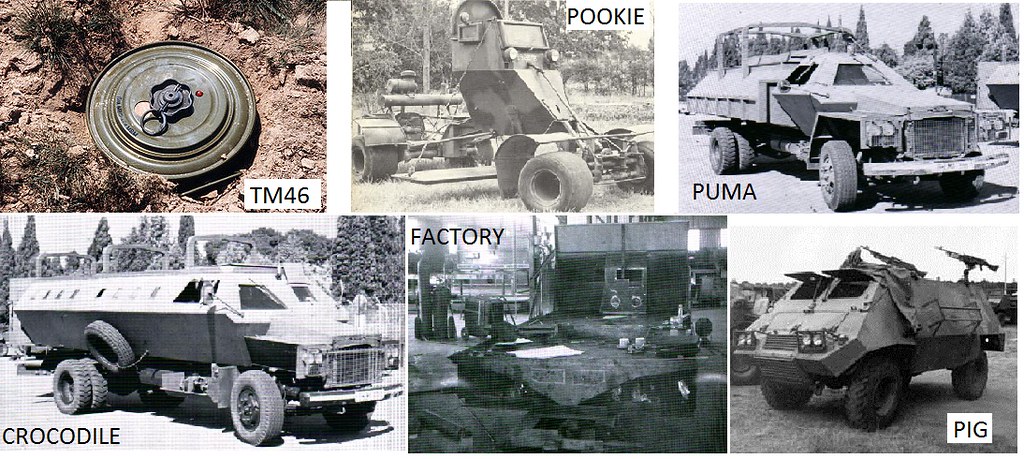Future of the Army MRAP Force
The Mine Resistant Ambush Protected (MRAP) vehicles have proven their worth in theater where they have obviously become an integral part of combat operations. And regardless of where US troops deploy in the future, the persistent threat of IEDs dictates the continued need for this type of vehicle.
But its not as easy as saying "MRAPs are good, the Army should have them."
How they should be incorporated into the operational Army structure is the question. Should every unit be issued MRAPs to replace 5-Ton trucks and Humvees - resulting in scores of them cruising around Ft Bragg and Ft Drum? Should they all be mothballed until we need them again? Maybe we should donate them to "friendly countries"? Obviously if I am taking the time to write this I must be advocating a different COA. In fact, I have done the COA analysis (not included in this entry!) and determined a balanced way that ensures proper training, availability, and utilization, while also reducing logistical costs. Surprisingly, as you’ll see, that means not integrating them directly into Army tactical units.
I propose that the future Army MRAP allocations be limited to:
1. CENTCOM Theater then into Army Preposition Stock (APS) locations
2. Specified active army installations (shared training asset)
3. National Guard/Reserve Mobilization Training sites
4. Combat Training Centers
There is no need to distribute MRAPs down to every Army BCT or even form specialized MRAP units within those BCTs. The MRAP after all is only a troop carrier - a very well armored truck. Yes, it sometimes used for route clearance missions but its main utility is transporting combat troops safely around the area of operations. Tactically speaking, riding in the back of a MRAP is not much different than riding in an old army Deuce and Half, unless of course that ride takes you over an IED. But it doesn’t require extensive day to day training for the passengers, just driver licensing/familiarization training.
That said, the Army must complete a performance review of the six existing MRAP variants in an effort to reduce the number of variants in the force to two, or at the most three. This will reduce both the overall logistical costs and field maintenance nightmares, and increase vehicle uniformity within the force. Criteria that should be considered are durability, soldier survivability, adaptability to different environments/terrain, and the costs of contractor supported logistical support.
CENTCOM Theater then into Army Preposition Stock (APS) locations
Given our current military operations in Iraq and Afghanistan, and the distinct possibility that this will not be our last visit to the Middle East/SouthWest Asia, the Army should maintain eight BCT-sized allocations of MRAPs for combat and stability operations in the CENTCOM Theater to rotate among deployed BCTs. As US operations wind down and the MRAPs are no longer required on the ground they can be transitioned to CENTCOM APS locations.
Specified active army installations (shared training asset)
At the Army installation level, a battalion-sized allocation of MRAPs should be contractor maintained for use by divisional units in specific training areas on the base. This would allow for the development of specialized home station lane training (ex. MOUT, route clearance, etc) utilizing these troop transport vehicles, prior to deployment to a CTC or to combat/contingency operations. In this way they are a shared division level training asset that is used by BCTs when needed, not sitting unused in BCT motorpools for extended periods of time. Due to contractor maintenance costs, having the MRAPs available for units to train with as needed is preferable to completely incorporating them into the division force structure.
National Guard/Reserve Mobilization Training sites
As the current wars have shown, the National Guard and Reserves makes up a large part of this nation’s contingency force. Therefore they must not be left out of the MRAP training cycle. Prepositioned stocks of MRAPs, with all required logistical support included, should be available at National Guard Mobilization Training sites and Annual Training locations. Depending on location, this will coincide with the existing stocks used by the active duty units as stated above. This will provide the National Guard the same advantages that it provides the active duty forces – equipment that is there when they need it, without the persistent logistical maintenance costs.
Combat Training Centers
The MRAPs should be part of the prepositioned stock that rotational units draw for their training at the Combat Training Centers. NTC, JRTC, and JMRC are the primary pre-deployment training locations for deploying units. Deploying units could train on MRAPs, similar to the ones they’d soon be issued in theater, in realistic and immersive training environments. These training centers already issue rotational vehicles out of their preposition yards, so adding MRAPs and the contractor supported maintenance would not be something unmanageable.
Conclusion
The MRAPs have proven to be an excellent mission specific mobility asset in the CENTCOM Theater that will undoubtedly be utilized by the US in future combat and contingency operations around the world. Incorporating the MRAPs into the operational Army structure in the ways I described above maximizes this asset’s availability while reducing the high logistical cost burden that would prove untenable in the future.




















Bookmarks